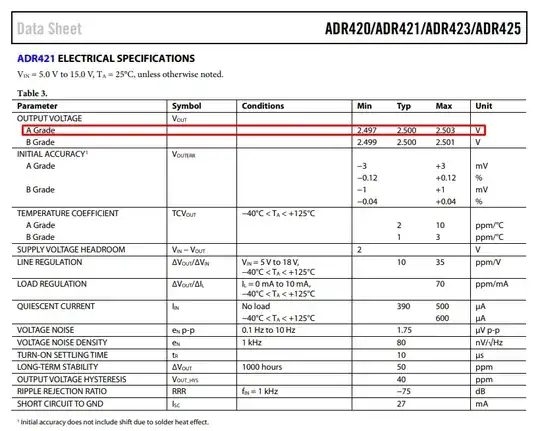Consider the ADR421. From the data sheet the initial accuracy is shown to be + or - 3mV of the nominal (2.5V). I understand that if you power on one of these chips with conditions at 25 degrees C, Vin = 5-15V, you will expect output in that initial accuracy range.. But does this mean that the output voltage is expected to change from + or - 3mV if kept at those same conditions?
I know that there are things like long term stability and thermal hysterisis but i'm asking strictly about the initial accuracy.
